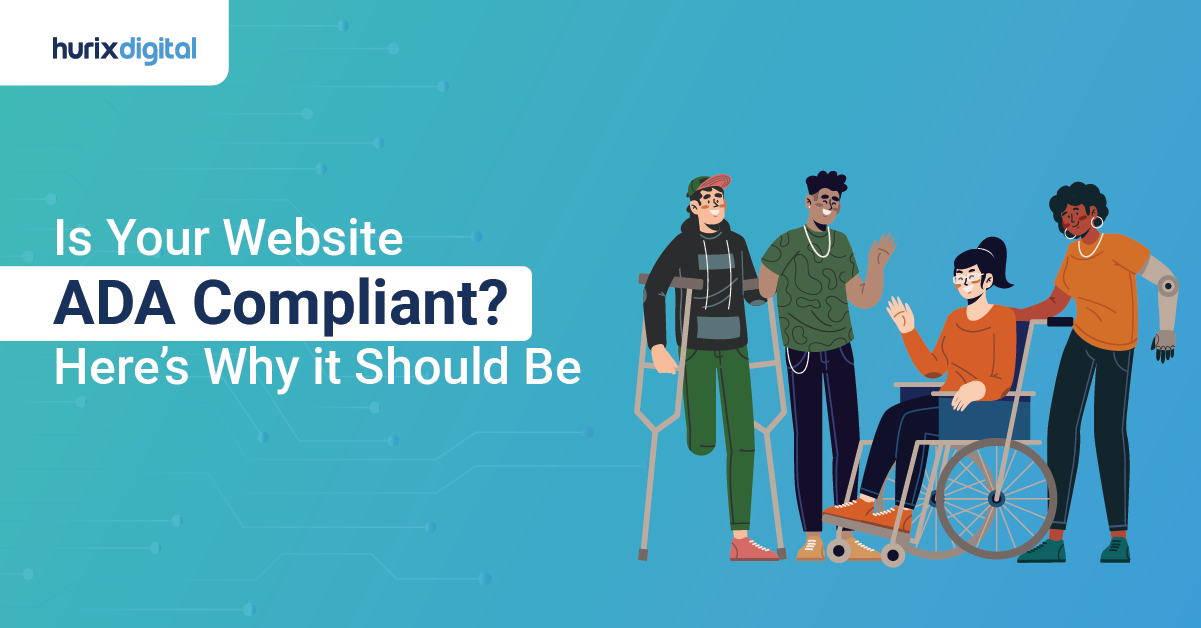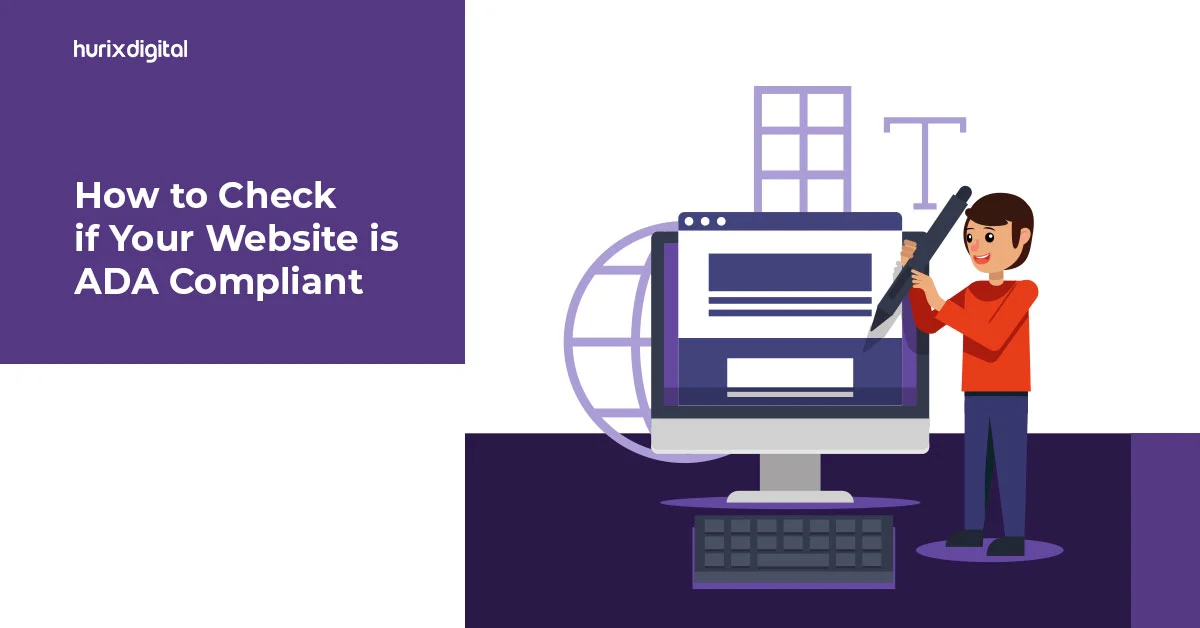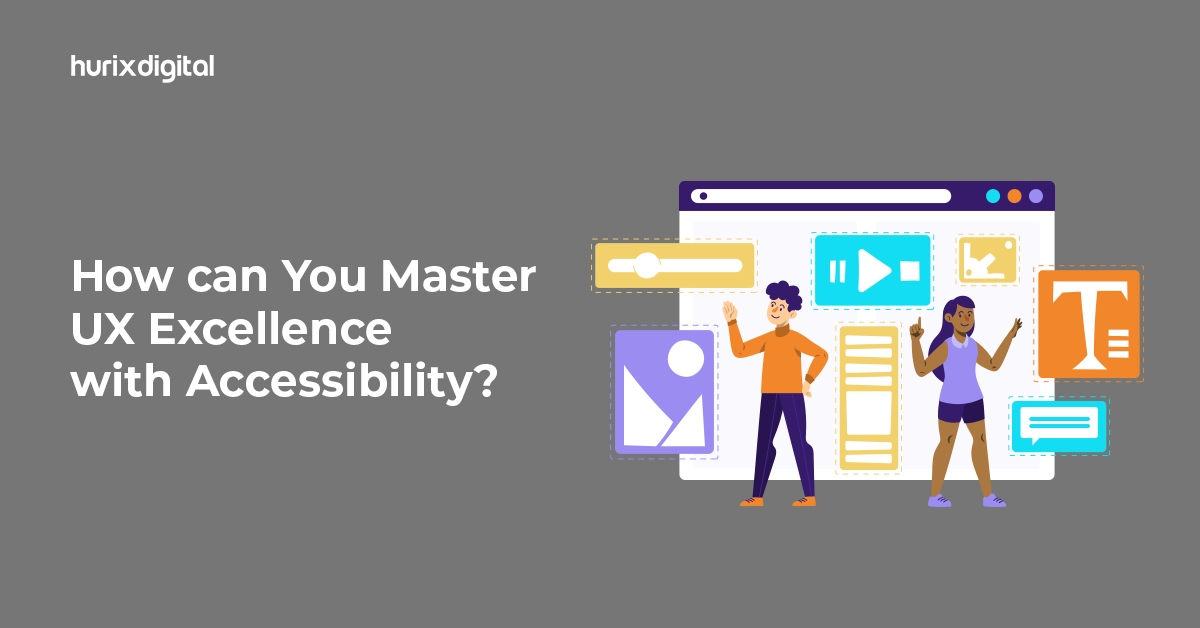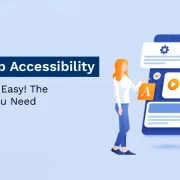
How to Make Your Website ADA/WCAG Compliant
An ADA-compliant website is not only a law but also a strategic imperative for your business. Your website, therefore, ought to be accessible to your customers with disabilities, then you have covered your back through lawsuits, and you have thereby increased your customer base and boosted the reputation of your brand, too.
Though the guidelines for accessibility might differ for different websites, the principle would be to provide ‘reasonable accessibility’ to all users. That means website designing and development should be done in such a way that people with or without disabilities, including visual, auditory, or motor impairments, can easily understand and use it.
Of course, businesses covered under either Title I or Title III of the ADA must comply. Still, any organization values having an accessible website because the benefits for all are immense. It attracts a wider audience, enhances their experience, and builds the strength of your brand to fit with what is now reasonably expected: inclusivity and how to make the website ADA and WCAG-compliant.
Table of Contents:
What is ADA Compliance?
The Americans with Disabilities Act, also known as ADA, mandates businesses to ensure access to people with disabilities. The act, which was passed in the year 1990, seeks to prohibit discrimination against people with disabilities such as seeing, hearing, speaking, walking, mental impairments, etc.
Businesses that fall under the ambit of this Act have to make accommodations such as the use of Braille for visually impaired customers or wheelchair accessibility for those who have difficulty in movement. This act lays down how to make a website ADA-compliant to meet the ever-changing needs of people, especially those with disabilities.
In 2010, ADA was extended to include electronic media, mandating all electronic and information technology such as websites to be designed to cater to the needs of people with disabilities. Web content has to be made accessible with features such as voice to cater to those with hearing disabilities and screen readers or other assistive technology for the blind, making your website ADA-compliant.
Also Read: All You Need to Know to Ensure Web Accessibility
Steps on How to Make Your Website ADA Compliant
Building an ADA-compliant website is a daunting process with detailed planning and execution. Here are the general steps that help ensure your website is accessible to everyone:
1. Evaluate Your Existing Website
If you have an existing website, the first step should be to analyze your layout, design, and content. You can do this manually by using screen reader software or even using specialized programs like Lighthouse or WAVE.
Your website should be understandable, perceivable, operable, and robust if it’s to be ADA-compliant. Study your website under these four categories and find out what you need to fill in the gaps.
2. ADA-Compliant Graphics
Graphics are essential in making sure your website is perceivable and ADA-compliant. Do not use graphics that flash for more than three seconds, as they are very distracting. Include both text and audio descriptions and captions that can be heard by the visually impaired or read by those with hearing disabilities.
3. Add Descriptive Alt Text
Add descriptive alternative text, or alt text, to all images and multimedia content so that your website is accessible to screen readers and visually impaired users.
The alt text describes the visual content in words, allowing screen readers to read it out to users. Make sure the alt text is brief, accurate, and relevant to the context of the image.
4. Use Readable Fonts
Fonts are a crucial component of an ADA-compliant website. Fonts such as Open Sans, Georgia, and Quicksand are easy on the eye. Also, give some thought to the colors of the font and the background. A light font will not work well with a light background; rather, it will put a strain on the eyes of the people trying to read your content.
Avoid a flashy background that takes away attention from the text. A good design practice is that the design should never overpower the content, rather it should highlight the text in a manner that is pleasing and easy to read. A light background with a dark font gives good results.
5. Add Logical Features
A crucial aspect of any ADA-compliant website is that it should be designed predictably. All your web pages should follow a common pattern.
So, if your images are placed centrally on the home page, they should follow the same pattern on all pages. Similarly, navigation buttons should be placed uniformly on all pages so that the readers don’t have to search for them on every page. Then again, you may have a pop-up window with a call to action.
However, the user may not want to follow the lead. In this case, the users should be able to see the ‘X’ sign to close the window. You can put the close sign in the upper right corner and in a visible color and size.
Then again, to make your website ADA-compliant, ensure that you provide both readable and audible instructions to perform some reader activity, for example, filling out a form.
6. Use Standard HTML Tags
By using standard HTML tags, you can ensure that your website is robust and the code is readable by an assistive reader. All your documents, including the PDF files, should be in the text format. This is because the reader software for the visually impaired may not be able to accurately read documents with complex images. Most website design platforms, such as WordPress, are designed for HTML, so making your website ADA-compliant with HTML tags should not be difficult.
7. Keyboard-friendly Website
The operable category of an ADA-compliant website ensures that your readers can interact with your website using a keyboard. This is necessary because not all people are comfortable navigating with a touchscreen or a grip mouse. Further, the readers should be able to slow down automatic scrolling or pause content. Avoid using auto-play videos or those with a time limit.
8. Regularly Update Your Website with Evolving ADA Compliance Regulations
With evolving knowledge and technology, ADA compliance regulations are also constantly evolving. As new technologies emerge, new changes have to be brought into the code to enable the website to be made accessible to assistive readers. It thus means you have to constantly update the new rules and regulations and always keep your website ADA-compliant.
Also Read: 5 Reasons Why Enterprises Need to be WCAG Compliant
In Conclusion
A website allows you an international audience, so you must design it according to international standards. One of those is the ADA, which ensures that your website and any other electronic content are accessible to people with certain disabilities.
This checklist illuminates the best practices that a website should adhere to for ADA compliance, for example, how to design its layout, what type of font and background color should be used, the types of audio and video content that must be included, and much more.
Here’s where Hurix Digital can help. We help design ADA-compliant websites, ensuring people with disabilities have access to the content they need, and businesses, on the other hand, profit from more traffic, more clicks, and consequently, more business.
Connect with our experts for guidance through the WCAG compliance process, ensuring your website is inclusive and reaches its full potential. Contact us today for a free consultation.

Vice President – Content Transformation at HurixDigital, based in Chennai. With nearly 20 years in digital content, he leads large-scale transformation and accessibility initiatives. A frequent presenter (e.g., London Book Fair 2025), Gokulnath drives AI-powered publishing solutions and inclusive content strategies for global clients








